Jet Propulsion Laboratory – Past Missions
Missions and instruments built or managed by JPL have visited every planet in our solar system and the sun and have entered interstellar space.

Ingenuity
The Ingenuity Mars Helicopter was a small, autonomous aircraft. It was sent to Mars to perform experimental flight tests to determine if powered, controlled flight at the Red Planet was possible.

Deep Space Atomic Clock
The Deep Space Atomic Clock, or DSAC, was a technology demonstration of a small, ultra-precise, mercury-ion atomic clock launched into Earth orbit to test its potential as a next-generation tool for spacecraft navigation, radio science, and global positioning systems.

TEMPEST-D
TEMPEST-D was a technology demonstration mission to enable millimeter wave radiometer technologies on a low-cost, short development schedule.

RainCube
RainCube (Radar in a CubeSat) was a technology demonstration mission to enable Ka-band precipitation radar technologies on a low-cost, quick-turnaround platform.

InSight
InSight, short for Interior Exploration using Seismic Investigations, Geodesy and Heat Transport, was a Mars lander designed to give the Red Planet its first thorough checkup since it formed 4 billion years ago.
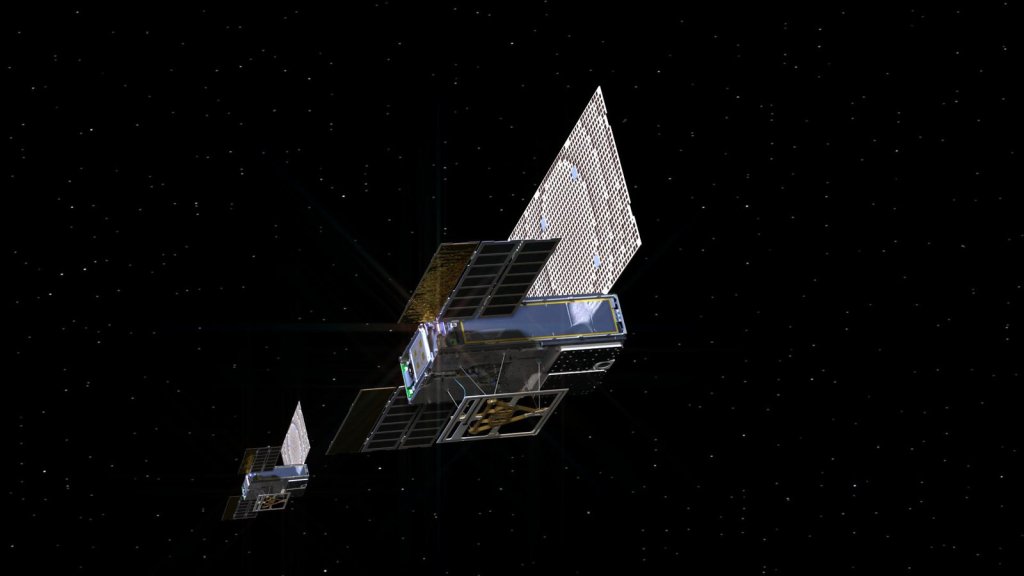
MarCO
The twin communications-relay CubeSats, built by NASA's Jet Propulsion Laboratory, Pasadena, California, constituted a technology demonstration called Mars Cube One (MarCO).

ASTERIA
ASTERIA (Arcsecond Space Telescope Enabling Research in Astrophysics) was a technology demonstration and opportunistic science mission to conduct astrophysical measurements using a CubeSat.

ASTERIA – Extended Mission
ASTERIA (Arcsecond Space Telescope Enabling Research in Astrophysics), a technology demonstration and opportunistic science mission to conduct astrophysical measurements using a CubeSat, was extended almost two years beyond its successful prime mission.
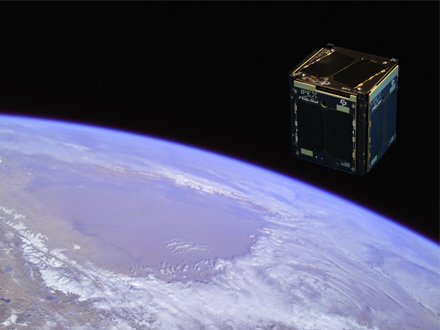
IPEX
The Intelligent Payload Experiment (IPEX) was a 1U CubeSat developed by Cal Poly San Luis Obispo and JPL.

RACE
The Radiometer Atmospheric CubeSat Experiment, or RACE, was a test of technology designed to improve NASA's Earth science and space exploration capabilities.

ISS-RapidScat
The ISS-RapidScat instrument was a speedy and cost-effective replacement for NASA's QuikScat Earth satellite, which monitored ocean winds to provide essential measurements used in weather predictions, including hurricane monitoring.

OPALS
The Optical Payload for Lasercomm Science, or OPALS, was a technology demonstration aboard the International Space Station designed to test the use of focused laser energy for space communications.

GRAIL
The Gravity Recovery and Interior Laboratory, or GRAIL, mission was designed to create the most accurate gravitational map of the moon to date, which when combined with topographic data, can provide insight into the moon's internal structure, composition and evolution.

M-Cubed/COVE-2
M-Cubed/COVE-2 was the reflight of a 1U CubeSat developed by U. Michigan to image the Earth at mid-resolution, approximately 200m per pixel.
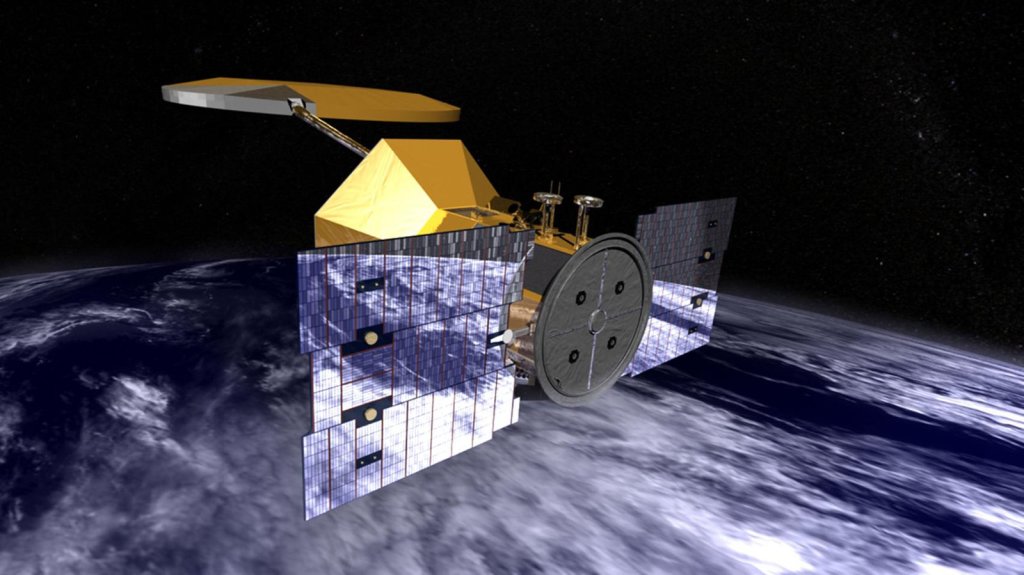
Aquarius
The Aquarius mission provided NASA's first global observations of sea surface salinity, giving climatologists a better understanding of the ocean's role in Earth's water cycle and weather patterns, as well as global climate variability.
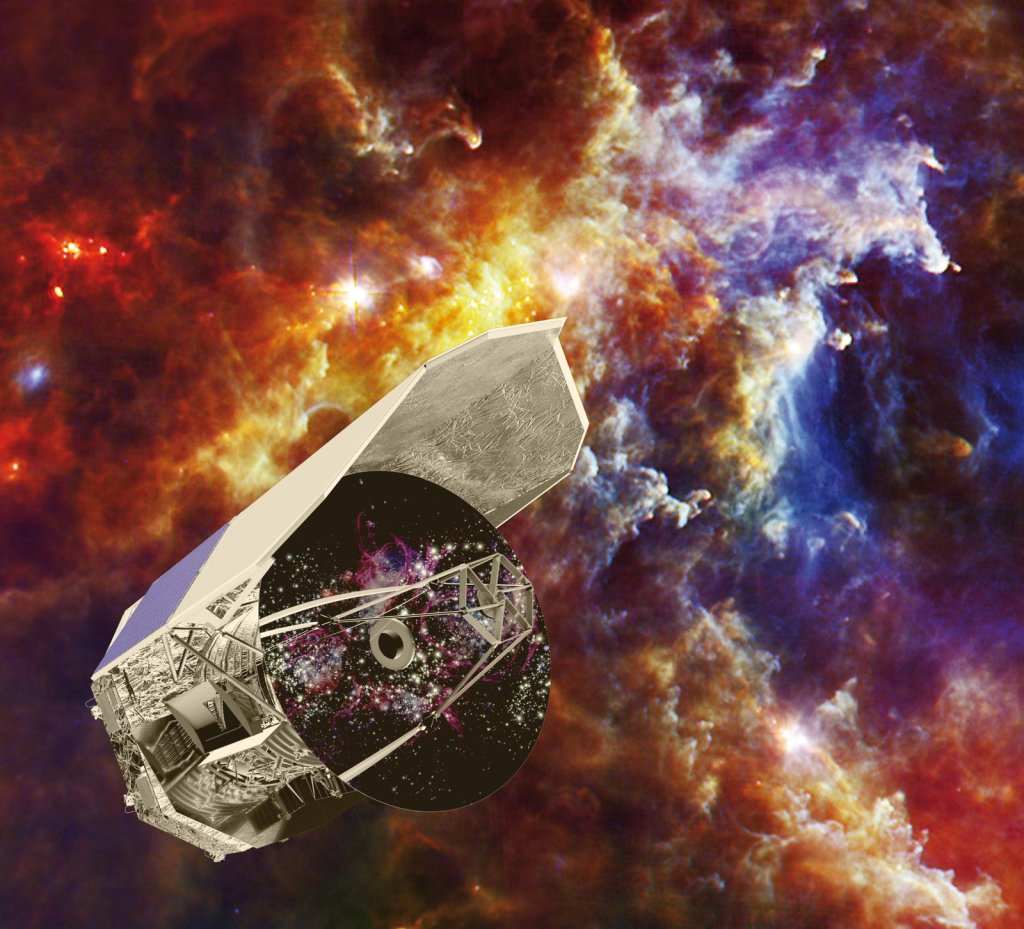
Herschel Space Observatory
A space-based telescope designed to study some of the coldest and darkest regions of the universe using infrared light, Herschel was responsible for numerous findings about dark matter, galaxies and other cosmic mysteries.

Planck
Designed to study ancient radiation from the big bang, the Planck space telescope was a European Space Agency mission that aimed to better understand the origin of the universe and the formation of galaxies.

Kepler Exoplanet Mission
Kepler was a space telescope designed to survey a portion of the Milky Way galaxy in search of exoplanets, which are planets outside our solar system.

Orbiting Carbon Observatory
The Orbiting Carbon Observatory, or OCO, was designed to make space-based observations of carbon dioxide in Earth's atmosphere to better understand the characteristics of climate change.

Wide-field Infrared Survey Explorer
WISE launched in 2009, repeatedly mapping the entire sky in infrared light. Its catalog of three-quarters of a billion objects led to the discovery of the coolest and nearest brown dwarfs and of the most luminous galaxies in the Universe.

Moon Mineralogy Mapper
The Moon Mineralogy Mapper, or M3, instrument flew aboard Chandrayaan-1, India's first mission to the moon, and provided the first mineralogical map of the lunar suface.

Jason-2
The Jason-2/Ocean Surface Topography Mission (OSTM) was the third in a U.S.-European series of satellite missions designed to measure sea surface height.

Dawn
Dawn orbited the protoplanet Vesta and the dwarf planet Ceres as part of its mission to characterize the conditions and processes that shaped our solar system.

Phoenix
Phoenix was a lander sent to the surface of Mars to search for evidence of past or present microbial life.

Deep Impact
Famous for its July 4, 2005 planned impact with comet Tempel 1 that generated a brilliant flash of light later discovered to be ice and dust debris ejecting from the fresh impact crater, the Deep Impact mission was the first attempt to peer beneath the surface of a comet.

Deep Impact – EPOXI
The EPOXI mission recycled the Deep Impact spacecraft, which had formerly visited comet Tempel 1, to visit a second comet, Hartley 2.

Tropospheric Emission Spectrometer
An infrared sensor instrument aboard NASA's Aura Earth satellite, the Tropospheric Emission Spectrometer, or TES, was designed to measure and investigate Earth's troposphere, the lowest level of Earth's atmosphere, and one of its key chemical components, ozone.

Autonomous Sciencecraft Experiment
The Autonomous Sciencecraft Experiment was an experimental technology on the Earth Observer 1 spacecraft that can autonomously make decisions about what data to collect, process that data and send it back to Earth.

Microwave Instrument for the Rosetta Orbiter
Aboard the European Space Agency's Rosetta spacecraft, the NASA-built Microwave Instrument for the Rosetta Orbiter, or MIRO, studied gases given off by comet 67P/Churyumov-Gerasimenko.
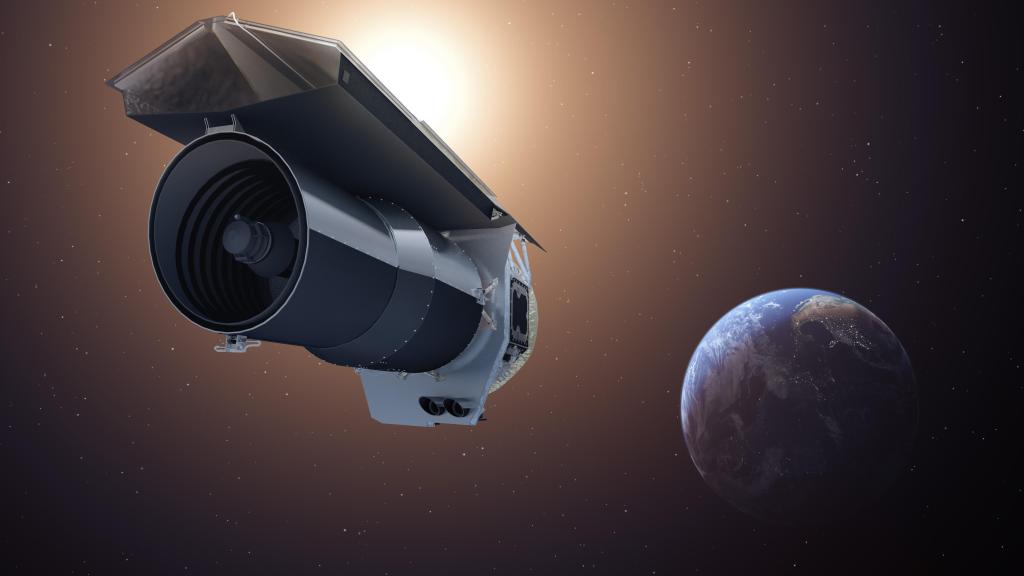
Spitzer Space Telescope
The Spitzer Space Telescope, launched in 2003, was NASA’s Infrared Great Observatory.

Opportunity Rover
Opportunity was the second of the two rovers launched in 2003 to land on Mars and begin traversing the Red Planet in search of signs of ancient water.

Spirit Rover
One of two rovers launched in 2003 to explore Mars and search for signs of ancient water, Spirit far outlasted her planned 90-day mission.

Hayabusa
The first mission to return a sample of material from the surface of a near-Earth object, the Japanese Hayabusa spacecraft, which also carried a mini-lander named MINERVA, was originally designed as a technology demonstration mission.

CloudSat
Part of NASA's fleet of weather- and climate-tracking satellites, CloudSat uses advanced radar to examine the inner structure of clouds, helping researchers better understand how severe tropical cyclones as well as climate changes related to clouds occur.

Galaxy Evolution Explorer
The Galaxy Evolution Explorer was an orbiting space telescope designed to observe the universe in ultraviolet wavelengths to measure the history of star formation in the universe.

GRACE
An award-winning mission that's changed the way we study Earth's gravitational forces and the Earth system, the Gravity Recovery and Climate Experiment, or GRACE, mission flew twin spacecraft in tandem around Earth to study key changes in the planet's waters, ice sheets and the solid Earth.
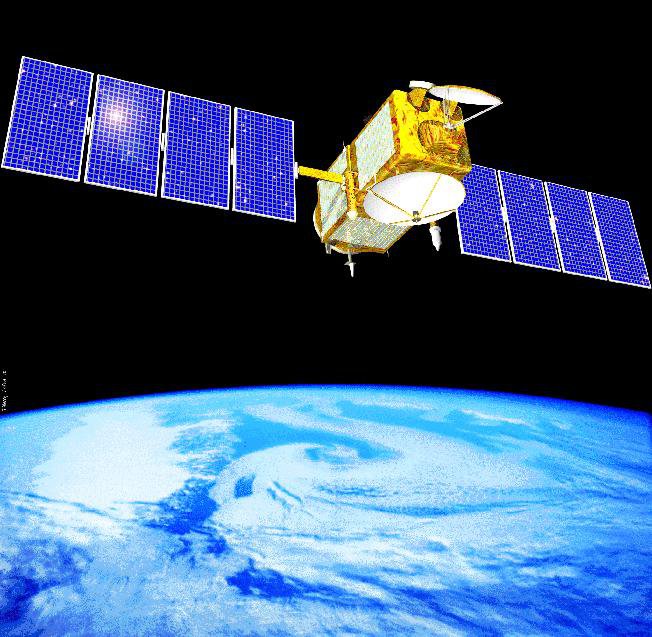
Jason-1
The Jason-1 Earth satellite, which for 11 years mapped sea level, wind speed and wave height for more than 95 percent of Earth's ice-free ocean, provided new insights into ocean circulation, tracked our rising seas and enabled more accurate weather, ocean and climate forecasts.

Genesis
Designed to gain a better understanding of our cosmic origins, the Genesis spacecraft was launched in August 2001 to collect solar wind samples and return them to Earth for study.

Keck Interferometer
The Keck Interferometer was a ground-based instrument that combined the light from the twin Keck telescopes to create an instrument equal in power to an 85-meter telescope that could detect and study stars and planets beyond our solar system.

Shuttle Radar Topography Mission
The Shuttle Radar Topography Mission, which flew aboard NASA's Space Shuttle Endeavour during an 11-day mission in 2000, made the first near-global topographical map of Earth, collecting data on nearly 80 percent of Earth's land surfaces.

AcrimSat
The Active Cavity Irradiance Monitor Satellite, or AcrimSat, mission spent 14 years in orbit monitoring Earth's main energy source, radiation from the sun, and its impacts on our planet.

Quick Scatterometer
The Quick Scatterometer, or QuikScat, was an Earth satellite that provided valuable data on ocean winds, revolutionizing environmental predictions and weather forecasting.

SeaWinds
The SeaWinds instrument, which flies on NASA's Quick Scatterometer Earth satellite, is a specialized microwave radar that measures near-surface wind velocity and cloud cover over Earth's oceans.

Wide-field Infrared Explorer
Designed as a four-month mission to study starburst galaxies, the Wide-Field Infrared Explorer, or WIRE, failed soon after launch due to a malfunction that caused the space telescope's coolant to be rapidly depleted.

Stardust
Stardust was the first spacecraft to return a cometary sample and extraterrestrial material from outside the orbit of the moon to Earth.

Stardust-NExT
Stardust-NExT was a follow-on mission that repurposed the Stardust spacecraft for a close re-encounter with comet Tempel 1 on Feb.

Mars Polar Lander / Deep Space 2
Designed to dig for water ice on Mars with a robotic arm, the Mars Polar Lander would have been the first-ever spacecraft to land on a polar region of the Red Planet.

Mars Climate Orbiter
Designed to study Mars from orbit and serve as a communications relay for the Mars Polar Lander and Deep Space probes, the Mars Climate Orbiter was unsuccessful due to a navigation error caused by a failure to translate English units to metric.

Deep Space 1
Originally designed to test a dozen new technologies including the use of an ion engine for spacecraft propulsion, Deep Space 1 far outstripped its primary mission goals by also successfully flying by the asteroid 9969 Braille and comet Borrelly.

Cassini-Huygens
Orbiting the ringed planet Saturn and its numerous moons, the Cassini spacecraft had been a keystone of exploration of the Saturnian system and the properties of gaseous planets in our solar system.

Mars Pathfinder / Sojourner Rover
The Mars Pathfinder mission, designed to demonstrate a low-cost method for delivering a set of science instruments to the Red Planet, was the first wheeled vehicle to be used on any other planet in the solar system and served as the foundation for the Mars rovers of today.

Mars Global Surveyor
The Mars Global Surveyor orbiter, which operated on Mars for more than nine years, was designed to study the composition of Mars, map its topography and monitor weather patterns.

NASA Scatterometer
Designed to gather data on the speed and direction of winds that cause ocean waves, the NASA Scatterometer instrument flew aboard Japan's Advanced Earth Observation Satellite, or ADEOS.

Spaceborne Imaging Radar-C / X-Band Synthetic Aperture Radar
First launched a decade after its predecessors, Spaceborne Imaging Radar-C was coupled with the German-built X-Band Synthetic Aperture Radar to image Earth in three different wavelengths.

Wide Field and Planetary Camera 2
Also known as "the camera that saved Hubble," the Wide Field and Planetary Camera 2, or WFPC2, served as the principal imaging instrument on the Hubble Space Telescope for 25-plus years, producing more than 135,000 of the most stunning photographs of the universe ever seen.

Mars Observer
The Mars Observer was based on a commercial Earth-orbiting spacecraft and designed to study and take high-resolution photography of the Martian surface.

Topex / Poseidon
An Earth satellite designed to measure ocean surface topography with unprecedented accuracy, Topex/Poseidon spent 13-plus years in orbit improving understanding of ocean circulation and its impact on global climate.

Ulysses
The Ulysses spacecraft was designed as a five-year mission to study the never-before-examined north and south poles of the Sun.

Galileo
While its aim was to study Jupiter and its mysterious moons, which it did with much success, NASA's Galileo mission also became notable for discoveries during its journey to the gas giant.

Magellan
The Magellan spacecraft, which arrived at Venus in 1990, made the first global map of the surface of Venus as well as global maps of the planet's gravity field.

Shuttle Imaging Radar-B
Shuttle Imaging Radar-B, the second in a series of NASA Earth-imaging instruments employing radar technology, was designed to fly aboard NASA's Space Shuttle Challenger, STS-41-G, to collect radar images of Earth at several angles.
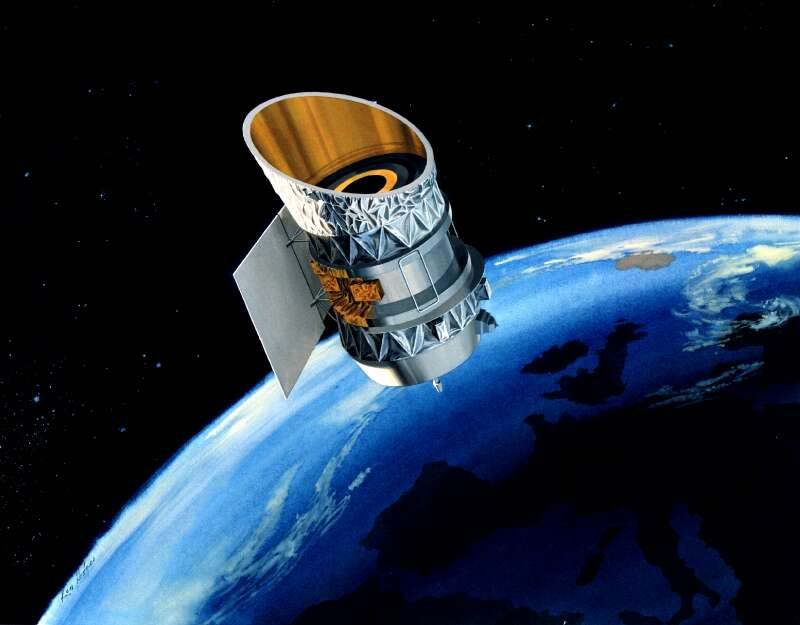
Infrared Astronomical Satellite
The Infrared Astronomical Satellite, or IRAS, was the first mission to put a telescope in space to survey the sky in infrared.

Shuttle Imaging Radar-A
Designed to fly aboard NASA's Space Shuttle Columbia, STS-2, Shuttle Imaging Radar-A was the first in a series of instruments that imaged Earth using radar pulses, rather than optical light, as illumination.

Solar Mesosphere Explorer
The Solar Mesosphere Explorer was an Earth-orbiting spacecraft designed to investigate the processes that create and destroy the ozone in Earth's upper atmosphere, or mesosphere.

Seasat
One of the earliest Earth-observing satellites, Seasat was designed to test various oceanographic sensors and gain a better understanding of Earth's seas.

Viking 2
Viking 2 landed on Mars in September 1976 — immediately following the first successful spacecraft landing on Mars by Viking 1 — and was part of NASA's early two-part mission to investigate the Red Planet and search for signs of life.

Viking 1
The first spacecraft to successfully land on Mars, Viking 1 was part of a two-part mission to investigate the Red Planet and search for signs of life.

Mariner 10
The first mission to employ gravity assist, or using the gravity of a planet to alter a spacecraft's speed and trajectory to fly by its target planet, the Mariner 10 mission flew by both Venus and Mercury, snapping photos and collecting data.

Mariner 9 (Mariner I)
In 1971, the Mariner 9 spacecraft beat the Soviet Mars 2 to the Red Planet to become the first spacecraft to orbit another planet.

Mariner 8 (Mariner H)
Designed to be the first American spacecraft to study the Red Planet from a Martian orbit, Mariner 8 (also called Mariner H) fell victim to a malfunction in the stage's flight-control system shortly after launch.

Mariner 7
The Mariner 7 spacecraft made a close flyby of Mars just five days after its twin spacecraft, Mariner 6, in 1969.

Mariner 6
Along with its twin Mariner 7 spacecraft, Mariner 6 was designed to make a close flyby of Mars to study the surface for signs of life and develop technology for future missions.
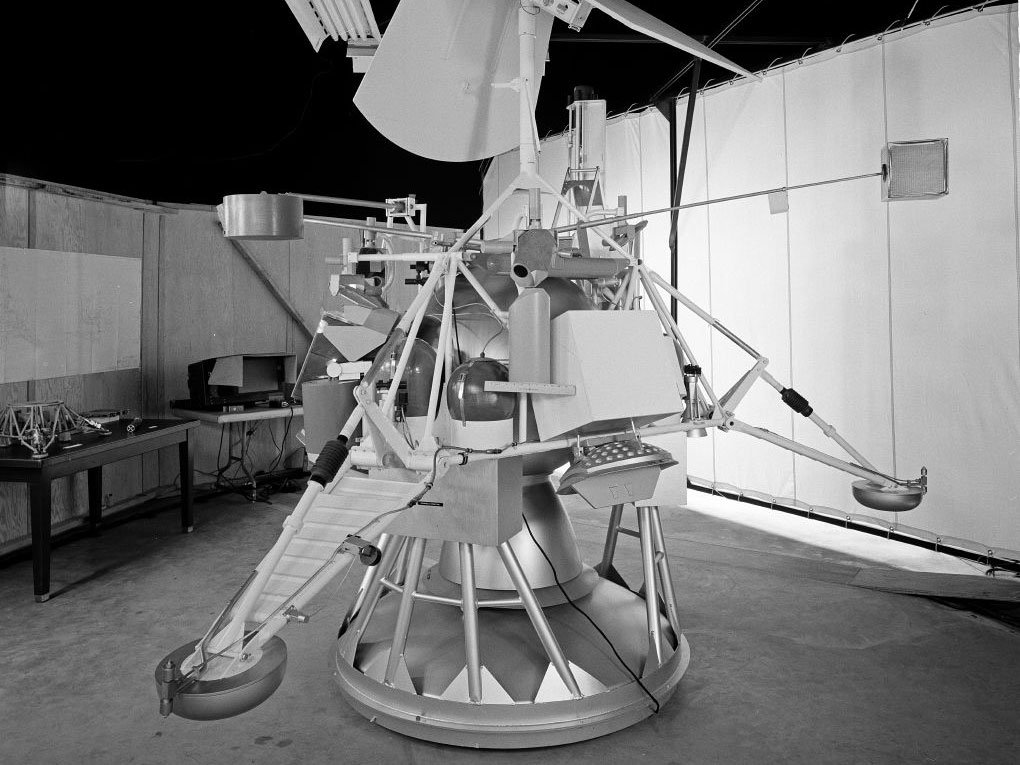
Surveyor 7
Surveyor 7 was the last of the original series of Surveyor moon landers of the late 1960s and was dedicated primarily to scientific investigations.

Surveyor 6
Part of the highly successful series of lunar landers sent to the moon to examine the feasibility of a future human mission, Surveyor 6 was the first spacecraft to be launched from the surface of the moon.

Surveyor 5
Equipped with a chemical element analyzer for conducting analyses of the lunar soil, the Surveyor 5 lander was the first spacecraft to do a soil analysis on the moon, or any other world.

Surveyor 4
Despite a perfect flight to the moon, Surveyor 4, which was designed to conduct further studies of the lunar surface in preparation for the upcoming Apollo missions, met an untimely end just 2.5 minutes before landing on the moon.

Mariner 5
Originally built as a backup to the Mariner 4 spacecraft, which successfully journeyed to Mars in 1965, Mariner 5 was modified to fly by Venus and collect data on the planet's atmosphere, radiation and magnetic field.
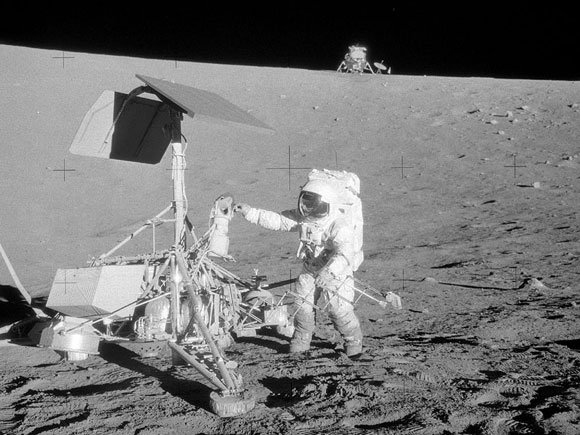
Surveyor 3
After Surveyor 1's initial studies of the lunar surface in 1966, Surveyor 3 made further inroads into preparations for human missions to the moon.

Surveyor 2
Surveyor 2 was designed as a follow-on to the highly successful Surveyor 1 mission and was the second of seven moon landers tasked with collecting lunar data in preparation for NASA's Apollo missions.

Surveyor 1
Surveyor 1, the first of a series of seven robotic spacecraft sent to the moon to gather data in preparation for NASA's Apollo missions, was the first spacecraft to make a true soft landing on the moon.

Ranger 9
Ranger 9 was the last of the Ranger series of spacecraft launched in the 1960s to explore the moon and was designed to image and impact the moon's crater Alphonsus, which was thought to be the site of recent lunar volcanic activity.

Ranger 8
Following on the success of the Ranger 7 mission, which was the first United States spacecraft to photograph the moon up close, Ranger 8 took more than 7,000 high-resolution images of the moon before impacting the lunar surface on February 20, 1965.

Mariner 4
One of the great successes of the early American space program, the Mariner 4 mission journeyed to Mars — making its closest approach on July 15, 1965 — and took the first photos of another planet from space.

Mariner 3
Mariner 3 was designed to fly by Mars and conduct other interplanetary experiments along the way.

Ranger 7
The Ranger 7 lunar lander was the first true success in the United States' early quest to explore the moon and heralded a new era of exploration that saw dramatically more mission successes than failures.
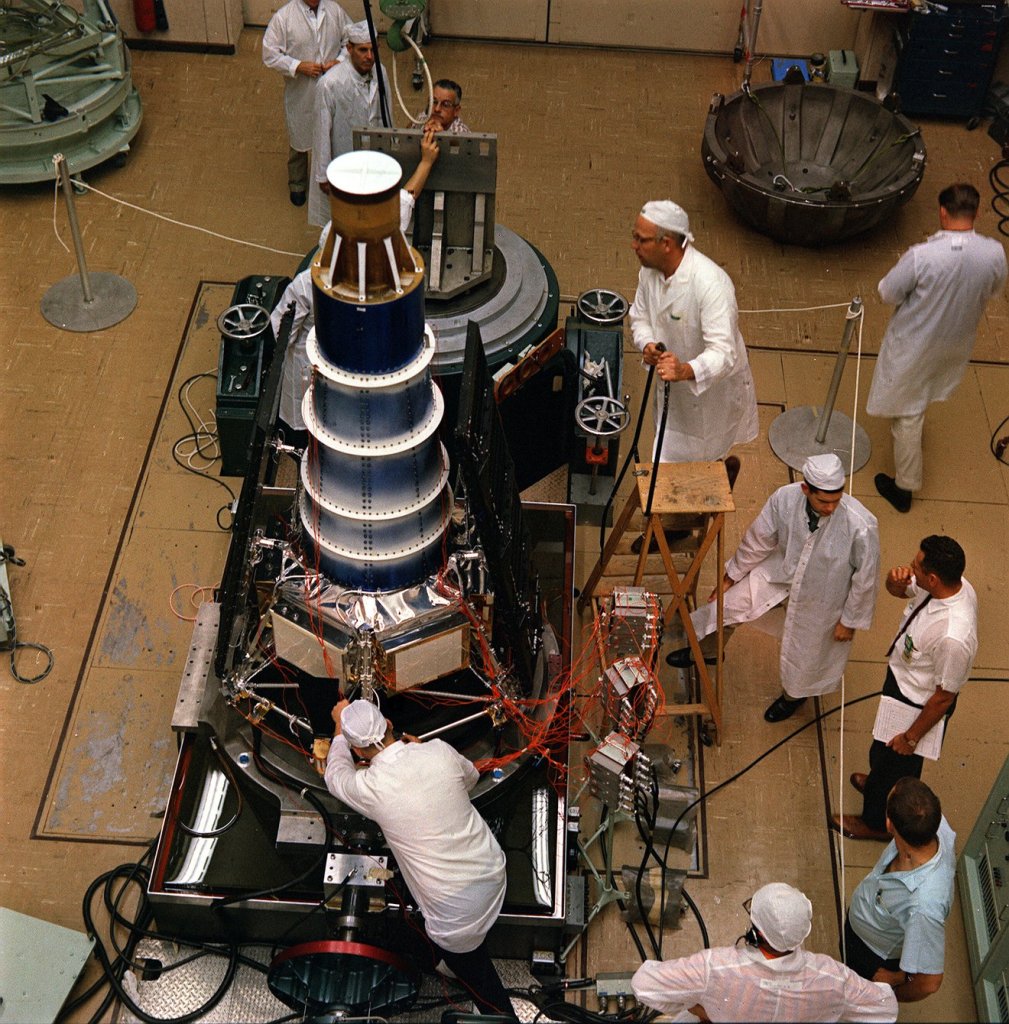
Ranger 6
Ranger 6 was principally designed to transmit high-resolution photographs of the moon before impacting the lunar surface and was part of the series of nine Ranger spacecraft launched in the early 1960s to explore the moon.

Ranger 5
The third attempt by the United States to land a spacecraft on the moon, Ranger 5 was designed to collect data on interplanetary space, photograph the moon up close and make a rough landing on the lunar surface.
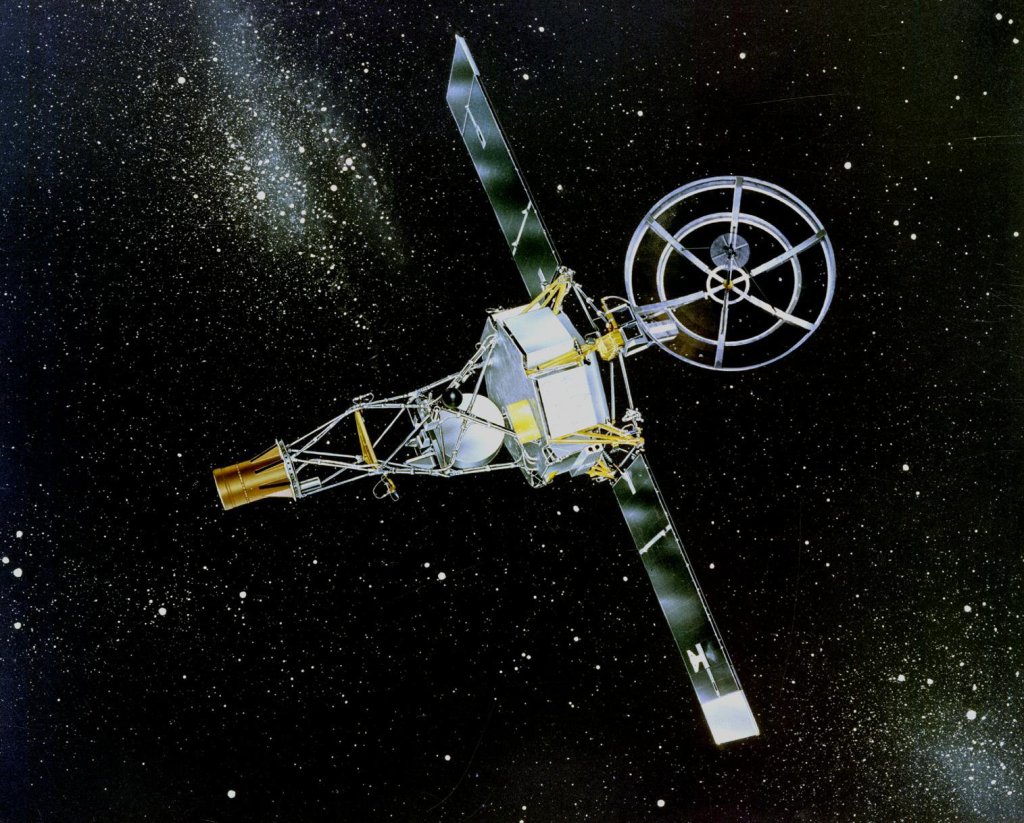
Mariner 2
Mariner 2 became the first successful mission to another planet when it flew by Venus on December 14, 1962.

Mariner 1
The first attempt by the United States to send a spacecraft to Venus, Mariner 1 was destroyed by the range safety officer about 290 seconds after launch when it veered off course.

Ranger 4
The Ranger 4 spacecraft, which was designed to collect data on interplanetary space, photograph the moon up close and make a rough landing on the lunar surface, was the first American spacecraft to reach another celestial body.


Ranger 2
The second of the series of spacecraft launched by NASA's Jet Propulsion Laboratory in the early 1960s to further lunar and interplanetary exploration, Ranger 2, like its predecessor, was built to test flight systems for a future lunar mission.

Ranger 1
Ranger 1, the first of a series of nine spacecraft launched in the early 1960s to explore the moon, was a test spacecraft built as a prelude to future lunar missions.

Pioneer 4
The Pioneer 4 mission was the second of two early attempts by the United States to send a spacecraft to the moon.

Pioneer 3
The Pioneer 3 mission was one of the first attempts by the United States to send a spacecraft to the moon.

Explorer 5
The Explorer 5 mission was the last of the original series of Explorer satellites designed, built and operated by NASA's Jet Propulsion Laboratory.

Explorer 4
Explorer 4 was designed to further investigate the radiation belt around Earth, discovered during the Explorer 1 and 3 missions.

Explorer 3
Explorer 3 was the third satellite of the Explorer mission series and the first successful follow-on to Explorer 1, which made history when in January 1958 it became the United States' first space satellite.

Explorer 2
Explorer 2 was the second satellite of the notable Explorer mission series that launched the United States into the Space Age, however, it did not reach the same success as its predecessor, Explorer 1.

Explorer 1
Explorer 1 became the first successfully launched satellite by the United States when it was sent to space on January 31, 1958.

























